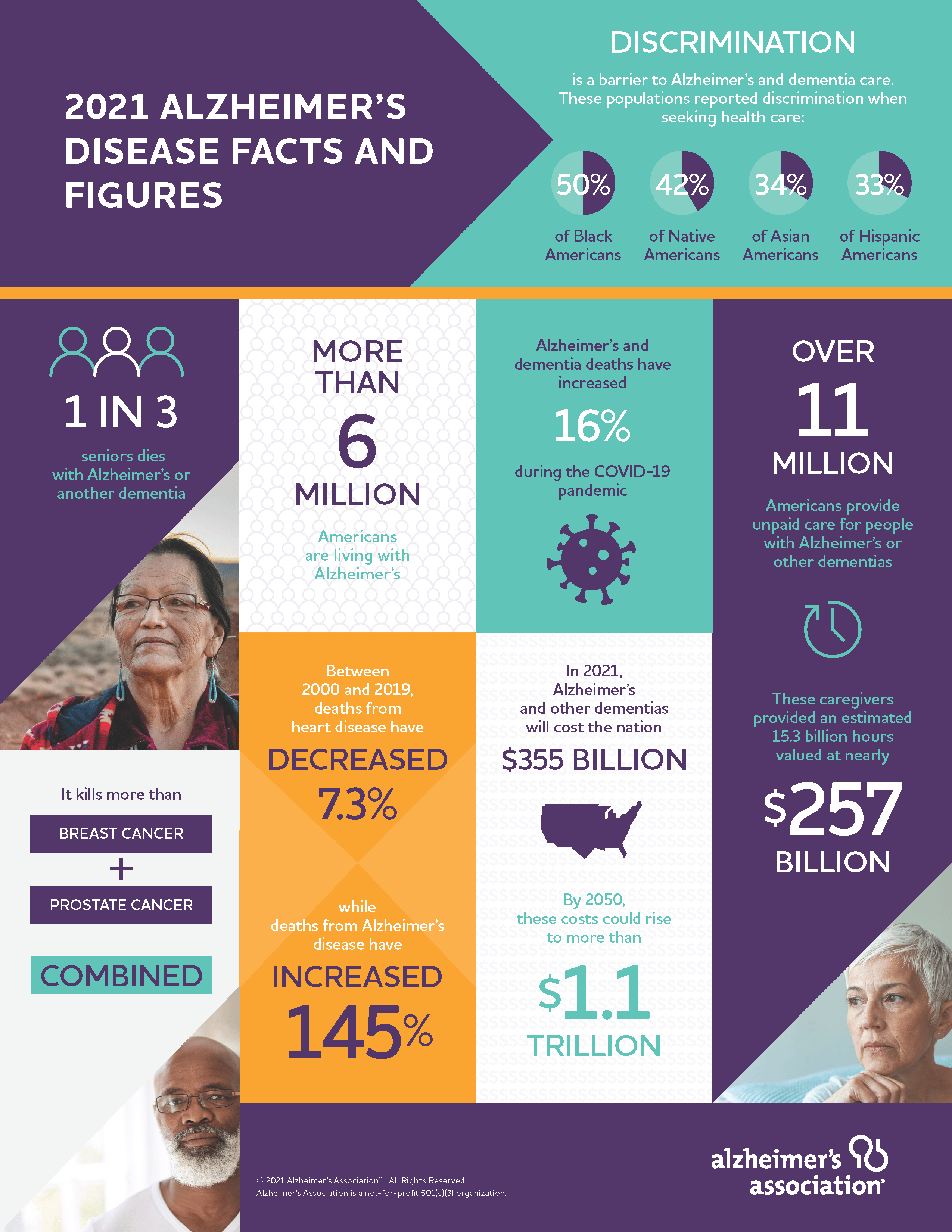
The Impact of Alzheimer's on the U.S. Population
The Impact of Alzheimer's on the U.S. Population
Alzheimer's Deep Dive - Podcast
Alzheimer's disease is a growing public health crisis in the United States. According to the Alzheimer's Association, an estimated 6.9 million Americans age 65 and older will be living with Alzheimer's dementia in 2024. This number is expected to increase dramatically in the coming years as the population ages.
The impact of Alzheimer's on the U.S. population is significant. In addition to the emotional and physical toll the disease takes on individuals and their families, Alzheimer's also has a significant economic impact. The Alzheimer's Association estimates that the total cost of health care and long-term care for people living with Alzheimer's and other dementias is projected to reach $360 billion in 2024.
Prevalence of Alzheimer's Disease
The prevalence of Alzheimer's disease refers to the number of people in a population who have the disease at a given point in time. The prevalence of Alzheimer's disease increases with age. In the United States, approximately 1 in 9 people (10.9%) age 65 and older have Alzheimer's dementia. The percentage of people with Alzheimer's dementia increases with age: 5.0% of people aged 65 to 74, 13.2% of people aged 75 to 84, and 33.4% of people aged 85 and older have Alzheimer's dementia.
Regional Differences in Prevalence
The prevalence of Alzheimer's disease varies across different regions of the United States. States and counties in the eastern and southeastern U.S. have the highest prevalence of Alzheimer's dementia. This may be due to several factors, including the older age of the population in these regions and the higher proportion of Black and Hispanic residents who are at increased risk of Alzheimer's dementia.

Incidence of Alzheimer's Disease
The incidence of Alzheimer's disease refers to the number of new cases of the disease that develop in a given period. The incidence of Alzheimer's disease also increases with age.
Lifetime Risk of Alzheimer's Disease
Lifetime risk is the probability that someone of a given age who does not have a particular condition will develop the condition during that person's remaining life span. The lifetime risk of Alzheimer's disease increases with age.
Sex/Gender Differences in Alzheimer's Disease
Women are more likely to develop Alzheimer's disease than men. This is likely due to several factors, including the fact that women live longer than men on average, and older age is the greatest risk factor for Alzheimer's.
Racial/Ethnic Differences in Alzheimer's Disease
Black and Hispanic older adults are more likely than White older adults to have Alzheimer's or other dementias. This is likely due to a number of factors, including socioeconomic and lifestyle factors, as well as genetic factors.
Trends in Alzheimer's Disease Prevalence and Incidence
A growing number of studies indicate that the prevalence and incidence of Alzheimer's and other dementias in the U.S. and other high-income countries may have declined in the past 25 years. This decline has been attributed to improvements in education and cardiovascular health. However, the total number of people with Alzheimer's or other dementias is expected to continue to increase dramatically because of the increase in the number of adults age 65 and older.
Looking to the Future
The number of Americans with Alzheimer's disease is expected to increase dramatically in the coming years. This is due to a number of factors, including the aging of the population, the growth of the age 85 and older population, and the increasing diversity of older adults.
The information provided in this blog article is intended for educational purposes only and should not be considered medical advice. Please consult with a qualified healthcare professional for any health concerns or before making any decisions related to your health or treatment.
Sources and related content

